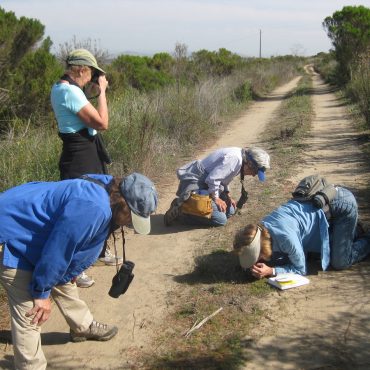Pygmy stonecrop (or pygmy-weed, Crassula connata) is a tiny native plant of early spring. It sometimes looks like moss, and it sometimes looks like a paprika spill, but it rarely looks like a mature, flowering plant. It bares little resemblance to its more dramatic ornamental relatives such as jade plant, live-forever, elephant ears and purple pinwheel.
Pygmy Stonecrop
Crassula connata
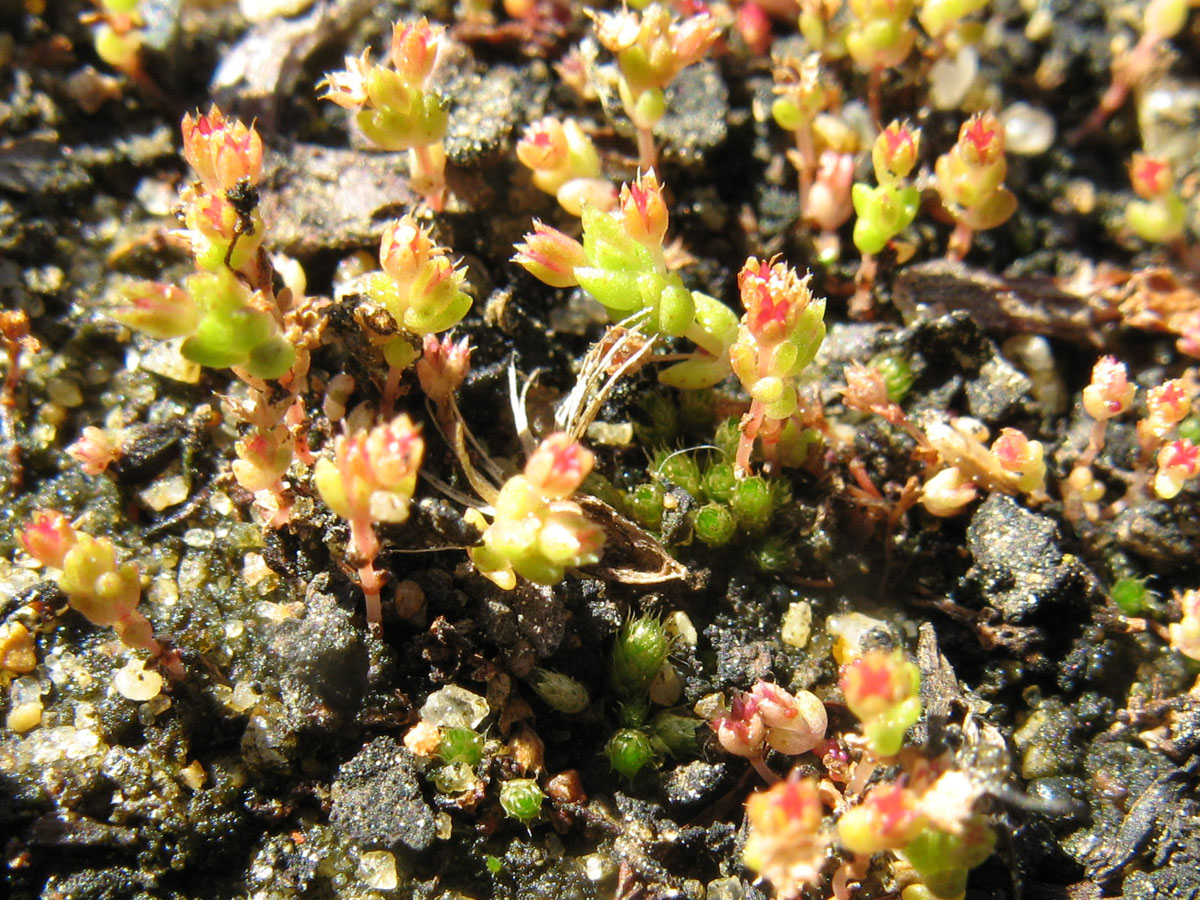
Other Common Names:
Pygmyweed, pygmy-weed, pygmy weed, pigmyweed, pigmy-weed, sand pygmy-stonecrop, erect pygmy-weed
Description 4,59,248
Pygmy stonecrop is a tiny, succulent, short-lived annual that rarely reaches two and a half inches (6 cm) high. Plants are green when young, often turning red as they age. Several branched or unbranched stems arise from the base. The fleshy leaves are sessile, opposite on the stem with the bases joined. Leaves are oval or oblong, 3/64 – 1/8 inch (1 – 3 mm) long, usually rounded at the tip, with a more convex surface below, giving them a jelly-bean shape. The margins are smooth with one or more glands on the lower surface that appear as rose-red dots.
Flowers occur in the leaf axils, often crowded together toward the branch ends. Flowers are about 3/64 inch (1 – 1.3 mm) across, and radially symmetrical, with four sepals, petals, stamens, and pistils. Sepals are fleshy, more or less triangular with a colorless point at the tip; they are light green, often with rose-colored spots resembling leaf glands. Petals are smaller than sepals and are not fleshy; they are colorless to whitish; the tips are drawn into a narrow point. There are four separate pistils, often bright rose in color. The four ovaries are superior. The reported flowering time is Feb.-May.1 Flowers are also seen in January in the Reserve.
Sepals are retained as the four one-chambered seedpods mature. Pods split open along the inner edge, each releasing one or two tiny brown seeds with faint surface striations.
Note: Pygmy stonecrop is described as glabrous (without hairs). We presume that the colorless filaments seen in many of our images are contaminants; they look very much like willow-fluff.
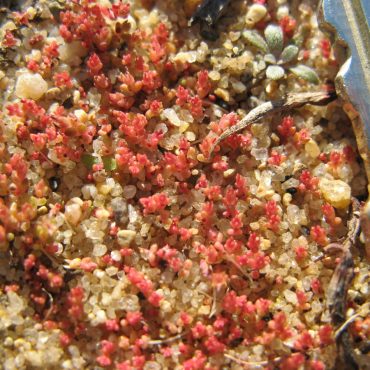
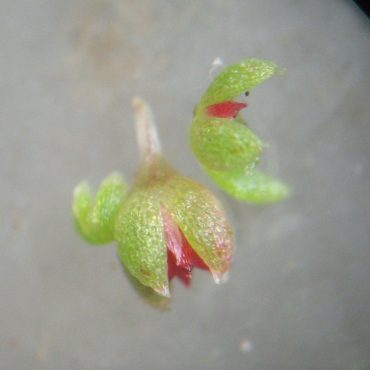

Distribution 7,89
Pygmy stonecrop is found in the far western part of North America from southern British Columbia to northern Mexico, including parts of Arizona and Texas. It has a disjunct distribution as far south as Chile.182 At the northern edge of its range, in Washington and British Columbia, pygmy stonecrop is listed as critically impaired, 182,248 threatened by habitat loss and trampling.
In California, it has been reported throughout the coastal areas and in the Central Valley, below 5000 feet (1600 m). It is found within a variety of vegetation types, but prefers open, sandy soil, especially depressions and slightly moist spots.59
In the Reserve, pygmy stonecrop is widespread but easily overlooked. It is found in late winter and spring along most of the trails, on both sides of the estuary and on both sides of the freeway.
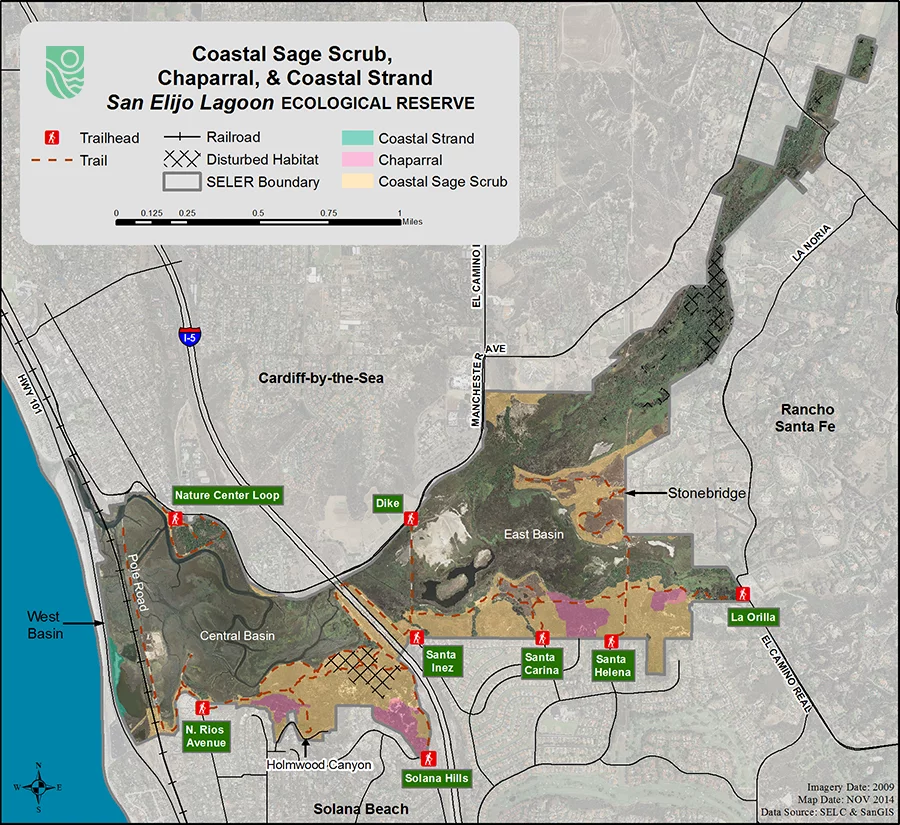
Classification 11,44,59,143
Pygmy stonecrop is a dicot angiosperm in the stonecrop family (Crassulaceae). Members of this family are mostly succulent herbs. The family is centered in South Africa but found worldwide except in Australia and the Southwest Pacific islands. The typical stonecrop flower has 3-5 unfused sepals and 3-5 petals. The stamens are equal to or double the number of petals. There are 3-5 pistils. Fruits consist of 3-5 unfused, dry, tear-drop shaped, one-chambered capsules, each producing several to many seeds.
There are many succulent ornamental plants in the stonecrop family. Their architectural diversity has prompted fanciful names like jade plant (Crassula ovata), neon showy stonecrop (in the genus Sedum), Blackbeard and blushing Aeonium and Purple Pinwheel (in the genus Aeonium), wax Agave (in the genus Echeveria), elephant ears and paddle plant (in the genus Kalanchoe) and live-forever (in the genus Dudleya).206
Other native stonecrop family members in the Reserve are three species in the live-for-ever genus, Dudleya: lance-leafed dudleya (D. lanceolata), chalk dudleya (D. pulverulenta) and ladies-fingers (D. edulis). A non-native ornamental, tree aeonium (Aeonium arborea) is occasionally found.48
Four varieties of pygmy stonecrop have been described, but these are no longer recognized.2,7,251
Alternate Scientific Names:
Crassula erecta, Tillea erecta
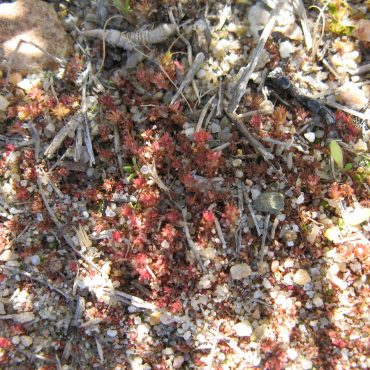
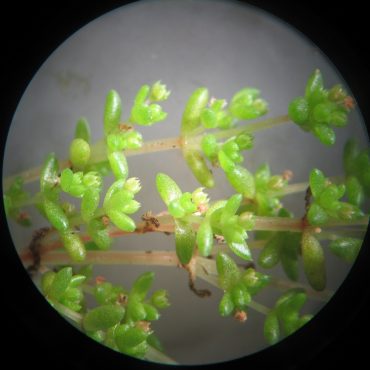
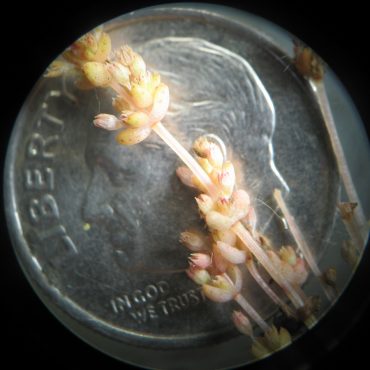
Ecology 41,250
All members of the stonecrop family (and some plants in other families) photosynthesize using “Crassulacean Acid Metabolism” (CAM). Most plants take up carbon dioxide and release oxygen during the day when carbon dioxide can be immediately used for photosynthesis. Most water loss occurs during this exchange of gasses. With CAM, plants exchange gasses at night, temporarily storing carbon dioxide internally until the following day when energy from sunlight is available to complete the production of carbohydrates. Since gas exchange occurs during the night when temperatures are lower and humidity higher, the loss of water is reduced.
CAM appears to be an adaptation to warm, dry climates. In spite of using CAM, however, pygmy stonecrop does not persist into the dry months, disappearing in the late spring.

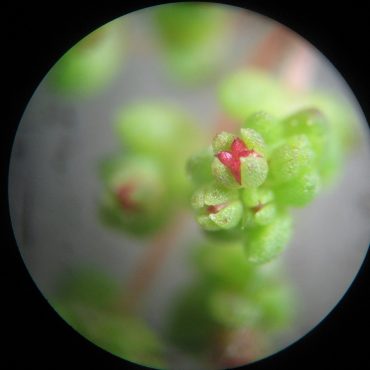
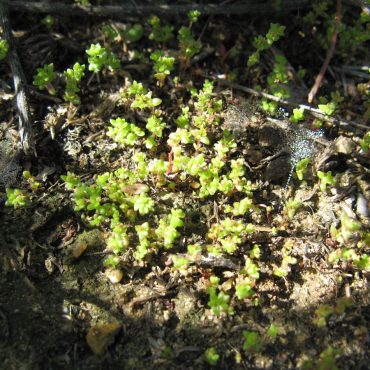
Human Uses
We know of no uses, either past or present, for pygmy stonecrop.
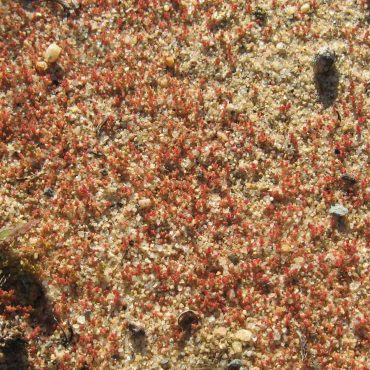
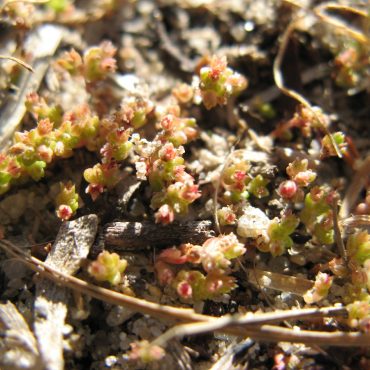

Interesting Facts
Pygmy stonecrop along with two closely-related species are our smallest native succulents, “. . . tiny annual plants . . . that no True succulent collector has ever deigned to notice.”251
